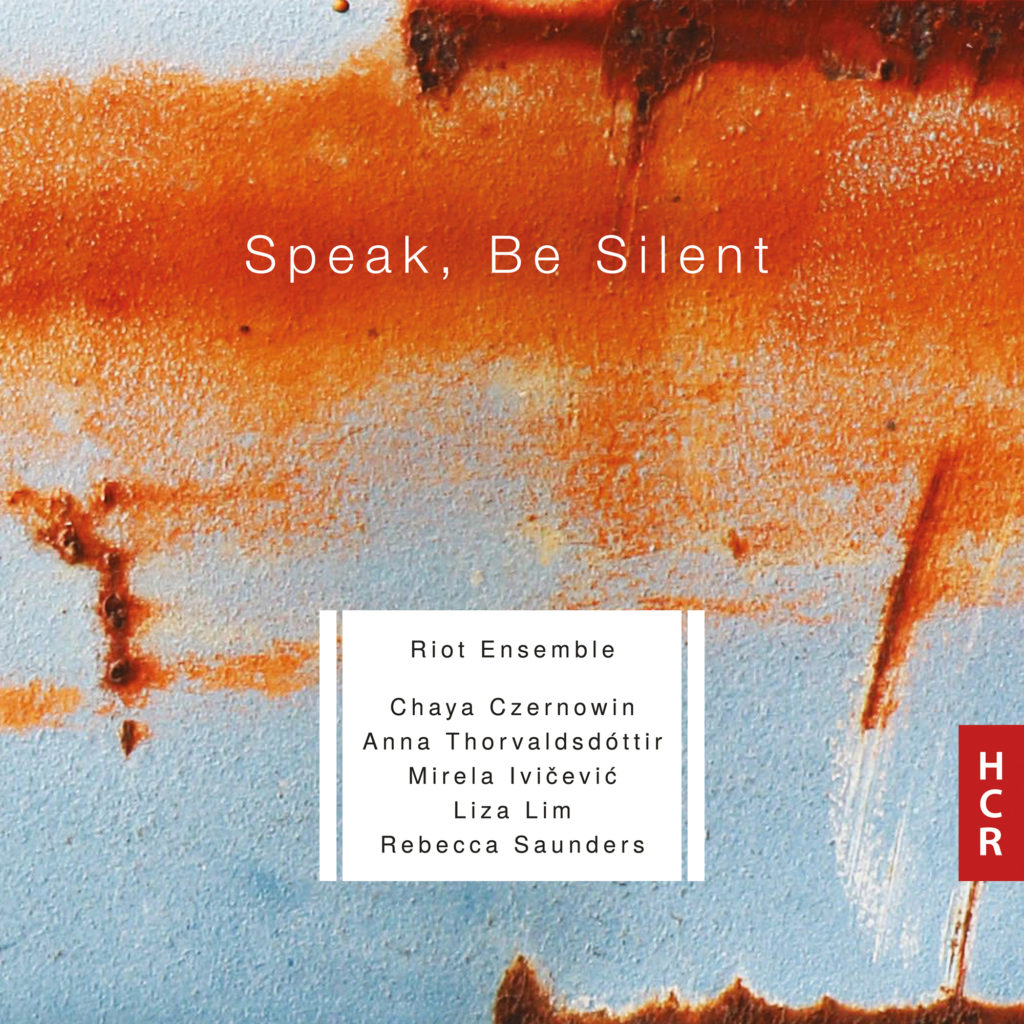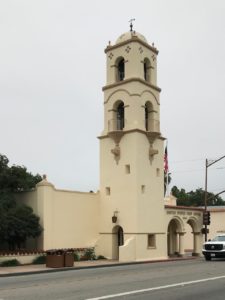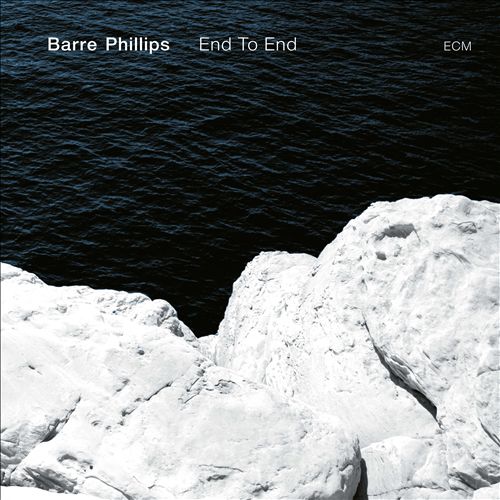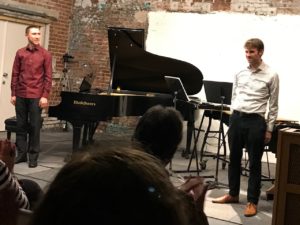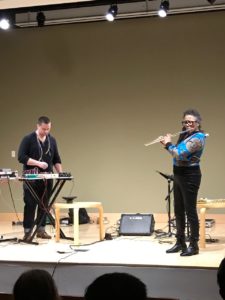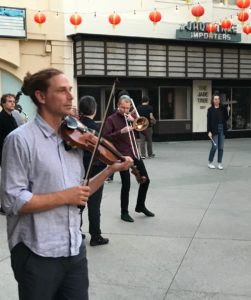 On June 14, 2019 the Southland Ensemble presented Land Images, an evening of experimental music at Automata Arts in Chinatown. The concert was part of the 15th annual Dog Star Orchestra series, presenting a dozen different new music concerts at various locations around Los Angeles through June 22. A full house packed the cozy spaces of Automata anticipating works by Christian Wolff as well as pieces by three contemporary composers.
On June 14, 2019 the Southland Ensemble presented Land Images, an evening of experimental music at Automata Arts in Chinatown. The concert was part of the 15th annual Dog Star Orchestra series, presenting a dozen different new music concerts at various locations around Los Angeles through June 22. A full house packed the cozy spaces of Automata anticipating works by Christian Wolff as well as pieces by three contemporary composers.
The first piece on the program was Groundspace or Large Groundspace, by Christian Wolff and was performed outside Automata in Chung King Court. About a dozen performers carrying various instruments gathered in the center of the court and began by playing quiet, sustained tones. This had a remote and distant feel to it, with nothing fast or rhythmic to disrupt the gentle harmonies. The players then began to slowly disperse into the square, so that their changing positions altered the spatial perspective of the listeners. The tones were consistently sustained and changed every minute or so by signal from a saxophone arpeggio. Some of the players slowly circled the outside perimeter of the square, creating variations in the intensity of the sonic field and adding an element of suspense. The audience was also encouraged to move about among the musicians so that position became an important and unique element of the experience. Chung King Court has buildings rising on three sides and opens onto busy Hill Street so that ambient traffic noise at times dominated the mix. Music and street noise often alternated, and this was effective in shifting the context of the piece and focusing the listening. The musicians eventually regrouped and filed inside Automata, and the concentration of their instrument sounds reasserted a fully musical perspective at the finish.
Once inside the players began performing Sticks, also by Christian Wolff, and for this each player took up a handful of twigs and small branches. They set about breaking these and dropping the pieces noisily to the floor. The small space was soon filled with the crackling sound of breaking sticks. There was no effort to coordinate or organize this process, but the sounds could sometimes be perceived as rhythmic. The ‘timbre’ of the breaking sticks had a vaguely purposeful feel, and so invited a more industrial analogy. Towards the end of the piece, the performers began a warm and sustained humming that added a ceremonial flavor to the proceedings. Sticks has an organic and primal sensibility, as if we are witness to the every-day activities of some long-lost tribe.
